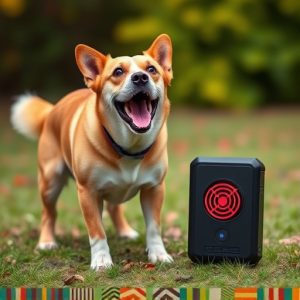Safe Sonic Pet Control: Understanding and Implementing Electronic Deterrents
Electronic pet deterrents using high-frequency sound waves for training are subject to stringent glo…….
Electronic pet deterrents using high-frequency sound waves for training are subject to stringent global regulations by bodies like the FDA and EU to safeguard pets and bystanders. These rules cover sound pressure levels, duration of use, and animal sensitivities, emphasizing responsible sonic technology use. Effective pet control requires a balanced approach combining animal welfare and deterrence; thorough research, consultation with experts, regular testing, and consideration of individual pet needs are crucial before employing electronic deterrents as a last resort, especially with evolving technology.
“Discover the revolutionary world of sonic technology in pet control with our comprehensive guide. As pet ownership continues to grow, finding safe and effective solutions for managing animal behavior is essential. This article explores electronic pet deterrents, delving into the science behind their operation and how they differ from traditional methods. We’ll navigate safety regulations and provide insights on best practices to ensure these devices are used responsibly. By understanding the technology and adhering to guidelines, you can implement electronic pet deterrent safety regulations effectively.”
- Understanding Electronic Pet Deterrents: The Technology Behind
- Safety Regulations and Standards for Sonic Pet Control Devices
- Implementing Safe Pet Control: Best Practices and Considerations
Understanding Electronic Pet Deterrents: The Technology Behind
Electronic pet deterrents, also known as ultrasonic or sound-based pet trainers, have gained popularity as a humane alternative to traditional shock collars. This technology leverages high-frequency sound waves to create an unpleasant sensation for pets, encouraging them to avoid certain areas or behaviors. The device emits a range of sounds, from high-pitched frequencies that humans typically can’t hear to more intense ultrasonic pulses designed specifically to deter animals.
The safety and effectiveness of these devices are heavily governed by strict regulations, ensuring they pose no harm to pets or bystanders. Electronic pet deterrent manufacturers must adhere to guidelines set by organizations like the FDA and European Union to prevent injury or distress. These regulations cover factors such as sound pressure levels, usage duration, and specific animal sensitivities to ensure responsible and safe implementation of sonic technology for pet training.
Safety Regulations and Standards for Sonic Pet Control Devices
The safety of electronic pet deterrents, including sonic devices, is a top priority for regulatory bodies worldwide. These devices, designed to control and manage pet behavior through sound waves, must adhere to strict standards to ensure they are harmless to both pets and humans. Many countries have implemented specific regulations to govern the development, marketing, and use of such technologies.
One key aspect of these safety regulations is ensuring that sonic pet control devices operate within safe decibel levels. Excessive noise exposure can cause hearing damage, so devices must be designed with an upper limit to protect users and pets alike. Additionally, these regulations often mandate thorough testing and certification processes to verify the safety and effectiveness of the products before they reach the market. This includes evaluating potential side effects, such as how different animals might react to specific sound frequencies, to guarantee their welfare.
Implementing Safe Pet Control: Best Practices and Considerations
Implementing Safe Pet Control requires a balanced approach that prioritizes both animal welfare and effective deterrence. The use of electronic pet deterrents, such as sonic technology, must adhere to strict safety regulations to ensure they do not cause harm or distress to pets. Best practices include conducting thorough research on the product’s effectiveness and safety features before purchase, consulting with a veterinarian or animal behaviorist for personalized advice, and regularly testing and maintaining the device to ensure optimal performance and minimal risk.
Considerations should also be given to the specific needs and behaviors of your pet. For example, not all pets respond equally to sonic signals, so training and acclimation periods are crucial. Additionally, electronic deterrents should always be used as a last resort after trying positive reinforcement techniques. Regularly reviewing and updating safety protocols is essential, particularly with evolving technology, to guarantee the well-being of your beloved pets while maintaining a controlled environment.
Sonic technology offers a safe and humane approach to pet control, but it’s crucial to follow best practices and adhere to safety regulations like those set by relevant standards bodies. By understanding the technology behind electronic pet deterrents and implementing careful considerations, pet owners can effectively manage their pets’ behavior without causing harm. With proper use, sonic pet control devices can be a game-changer in creating a harmonious living environment for both pets and humans.


